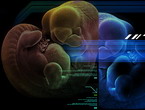| Author
|
Wannabe \"The mother of all Technical Terms\"
|
PsyTiax
IsraTrance Junior Member

Started Topics :
26
Posts :
190
Posted : Mar 3, 2008 15:15:30
|
Hi everyone !
I'm currently learning about production, and when I started looking for some definitions, I found this dictionnary :
It's very good, but most of the definitions aren't relevant to a noob like me, so I decided to make my own dictionnary using only the terms I judged to be useful for most first-timer like myself.
It's not complete yet (I'm at work right now), but I'll complete this this evening as much as I can, and more important, it would be just great if people more experienced than myself (something that should represent 99% of this forum) would give me their opinions, tell me if there's a mistake, if I forgot an important term, or if they simply feel that this "lite" dictionnary should be altered in any way, I'll gladly modify it.
I really think that a thread like this could help newbies to get the hang of things a bit quicker.
So, without further addo, here it is !
A.D.S.R.: Diminutive for Attack, Delay, Sustain & Release
Attack: Period between a note being struck and its sound level pressure peak.
Band Pass Filter: A filter which allows only certain frequencies to pass, while rejecting all others above or below the cutoff point.
i) High pass filter: Stop low frequencies
ii) Low pass filter: Stop high frequencies
Decay: Effect that repeats the sound at regular intervals, creating an echo-like effect.
Dry/Wet: Said from a sound that is not/fully processed.
Dynamics processing: Processing which alters aspects of the dynamics
(difference in sound level) of an audio signal.
i) Compression: Lessens the difference between the highest and the lowest levels of the sound.
ii) Noise Gating: Cuts the signal for very short periods when it falls below a certain level.
Envelope: Factors which determine how a signal sounds over its period of existence.
EQ: Signal processing device which alters the frequency response of an audio signal.
Fader: Sliding potentiometer which may increase/attenuate the gain of a signal.
i) Fade in/out: Gradually increment/decrement the level of a signal.
Filter: Electrical circuit designed to boost or to attenuate the level of a signal.
Flanger/Flanging: When a signal is combined with a slightly delayed, modulated form of itself.
Gain: Level of amplification of a given signal (= volume)
LFO: Low frequency oscillator
Limiter: Sound process which sharply cuts off output once it reaches a preset level.
Modulation: Changing the key of a signal
Mono/Polyphonic: Possibility for a given instrument to play or not more than a single note simultaneously.
Quantitize: Sequencers ability to make notes/beats recorded conform to the nearest subdivision of a bar.
Reverb: Effect that changes the acoustic perception of a sound.
|

|
|
knocz
Moderator

Started Topics :
40
Posts :
1151
Posted : Mar 3, 2008 15:31
|
It's not a bad idea.
If you want any definitions, go to wikipedia  Thats where I go and it hasn't failed me yet Thats where I go and it hasn't failed me yet
        Super Banana Sauce http://www.soundcloud.com/knocz Super Banana Sauce http://www.soundcloud.com/knocz |

|
|
Speakafreaka
IsraTrance Junior Member

Started Topics :
18
Posts :
779
Posted : Mar 3, 2008 15:33
|
|
PsyTiax
IsraTrance Junior Member

Started Topics :
26
Posts :
190
Posted : Mar 3, 2008 15:37
|
I know that there's tons of website where you can find this kind of thing, but I just thought that as we already have some very nice "Mother of all ..." threads, one more about a subject that hasn't been covered yet could make this forum even more complete 
Quote:
|
On 2008-03-03 15:33, Speakafreaka wrote:
its a good idea, but the R in ADSR is not reverb  its 'release'. its 'release'.
|
|
Whoopsy, corrected, thanks ! |

|
|
Glitch_CapeTown
IsraTrance Junior Member

Started Topics :
36
Posts :
952
Posted : Mar 3, 2008 16:36
|
|
UnderTow

Started Topics :
9
Posts :
1448
Posted : Mar 3, 2008 17:02
|
Quote:
|
On 2008-03-03 16:36, Glitch_CapeTown wrote:
Loudness Contour - the closer the sound source is to the receptor, there is a slight increase in low freq tones, gradually decreasing as the sound source is moved backward away from the receptor.
|
|
I think you are referring to the "Proximity effect" that directional microphones have. (Not all mics have this effect!)
"Loudness Contour" is an EQ in HiFi's etc to give the impression that the sound is louder than it really is due to the Equal Loudness curves. (Also called Fletcher-Munson curves). It adds some bass and some high-end.
Btw, there is a glossary at Sweetwater: http://www.sweetwater.com/expert-center/glossary/
UnderTow |

|
|
PsyTiax
IsraTrance Junior Member

Started Topics :
26
Posts :
190
Posted : Mar 3, 2008 18:24
|
Damn, am I going crazy, or is it normal that I can't edit my original post anymore ?
Well then, I suppose I'll make another version with your addo on my computer, then post it again once it's fairly complete...
|

|
|
Spycht

Started Topics :
6
Posts :
194
Posted : Mar 3, 2008 21:27
|
Couple more corrections:
The D in ADSR is not delay it's decay.
An echo/repetitive effect is delay not decay.
Quantize not quantitize. |

|
|
Glitch_CapeTown
IsraTrance Junior Member

Started Topics :
36
Posts :
952
Posted : Mar 3, 2008 22:36
|
|
psytendo
Started Topics :
1
Posts :
73
Posted : Mar 3, 2008 23:23
|
some more corrections/enhancements:
compression:
gradualy lessening the level of a signal depending on how much its level is above a threshold.
limiting:
fast adaptation of the level to make sure the signal doesnt cross a threshold.
noise gating:
Cutting the signal when it is below a certain level.
Envelope:
Factors which determine how a signals level is changed over its period of existence.
Can apply to other factors than level
EQ:
Specific set of filters designed for frequency balance shaping.
Filter:
Signal processing device which alters the phase of the frequency components of an audio signal.
Modulation:
Changing an aspect of a signal.
Quantize:
A process which forces data into certain quantitative steps.
Loudness Contour:
A graph of the perceptive volume of a spectrum.
(has nothing todo with hifi sets, the word UnderTow is looking for is just Loudness  ) )
|

|
|
UnderTow

Started Topics :
9
Posts :
1448
Posted : Mar 4, 2008 02:07
|
Quote:
|
On 2008-03-03 23:23, psytendo wrote:
Loudness Contour:
A graph of the perceptive volume of a spectrum.
|
|
What? Now in english please? Hehe 
Quote:
|
(has nothing todo with hifi sets, the word UnderTow is looking for is just Loudness  ) )
|
|
No no. 
Loudness is the subjective level one perceives. As in the sentence: "To double the loudness, you need to increase the level by 10 dB".
The Loudness Contour is what is applied when the Loudness button in pressed.
UnderTow
|

|
|
psytendo
Started Topics :
1
Posts :
73
Posted : Mar 4, 2008 06:25
|
"Loudness is the subjective level one perceives."
Yes, but it is also a function on most hifi amps.
Some manufacturers call it loudness contour
, others just loudness but i think that a normal person would call it loudness.
"The Loudness Contour is what is applied when the Loudness button in pressed. "
That's just one -application- of a certain type of loudness contour... (one that compensates for the lower listening level)
But in general it is just a mapping of perceived loudness plotted on something like a sound pressure scale.
It is a graph of a subjective measurerment, not nessesary applied to anything (like a hifi set).
A special case would be an equal loudness contour.
This is a graph of what the level of frequencies needs to be for a person to hear them equally loud.
Something like this would be used to create the 'Loudness' function in a hifi.
Anyway, lets not waste another topic on discussion  |

|
|
Glitch_CapeTown
IsraTrance Junior Member

Started Topics :
36
Posts :
952
Posted : Mar 4, 2008 13:03
|
|
PsyTiax
IsraTrance Junior Member

Started Topics :
26
Posts :
190
Posted : Mar 4, 2008 16:02
|
Thanks for your contribution, I'll correct this right away and post the new version in this thread, this way people can see the latest version... I suppose this should be ready for a "real" Mother of... topic in one or two week ! 
EDIT : Here we go, I made the changes using your recommendations
v0.2
A.D.S.R.: Diminutive for Attack, Decay, Sustain & Release
Attack: Period between a note being struck and its sound level pressure peak.
Band Pass Filter: A filter which allows only certain frequencies to pass, while rejecting all others above or below the cutoff point.
i) High pass filter: Stop low frequencies
ii) Low pass filter: Stop high frequencies
Delay: Effect that repeats the sound at regular intervals, creating an echo-like effect.
Dry/Wet: Said from a sound that is not/fully processed.
Dynamics processing: Processing which alters aspects of the dynamics
(difference in sound level) of an audio signal.
i) Compression: Gradualy lessening the level of a signal depending on how much its level is above a threshold.
ii) Noise Gating: Cuts the signal for very short periods when it falls below a certain level.
Envelope: Factors which determine how a signal sounds over its period of existence.
EQ:
i)Signal processing device which alters the frequency response of an audio signal.
ii)Specific set of filters designed for frequency balance shaping.
Fader: Sliding potentiometer which may increase/attenuate the gain of a signal.
i) Fade in/out: Gradually increment/decrement the level of a signal.
Filter: Electrical circuit designed to boost or to attenuate the level of a signal.
Flanger/Flanging: When a signal is combined with a slightly delayed, modulated form of itself.
Gain: Level of amplification of a given signal (= volume)
LFO: Low frequency oscillator
Limiter: Sound process which sharply cuts off output once it reaches a preset level (Fast adaptation of the level to make sure the signal doesnt cross a threshold).
Loudness Contour: A graph of the perceptive volume of a spectrum.
Modulation: Changing the key/an aspect of a signal
Mono/Polyphonic: Possibility for a given instrument to play or not more than a single note simultaneously.
Proximity effect: The closer the sound source is to the receptor, there is a slight increase in low freq tones, gradually decreasing as the sound source is moved backward away from the receptor.
Quantize:
i)Sequencers ability to make notes/beats recorded conform to the nearest subdivision of a bar.
ii)A process which forces data into certain quantitative steps.
Reverb: Effect that changes the acoustic perception of a sound. |

|
|